Manual data entry might be one of the most tedious and inefficient tasks in the corporate world. Not only does it put you to sleep, but it also wastes precious time and resources, slashing your productivity to bits.
According to Zapier, 94% of workers perform time-consuming, repetitive tasks. Fortunately, there’s technology that can automate these mind-numbing tasks, eliminating human error and letting you focus on the work that actually matters — workflow automation.
By leveraging self-operating processes that run manual tasks, workflow automation can help your business save time and money, diminish errors, and boost productivity.
Table of Contents
How does workflow automation work?
Workflow automation typically relies on a series of if/then statements to trigger another task. It then branches off depending on the action that was taken by a lead, employee, or another stakeholder.
Let’s walk through an example workflow for turning a form submission into a deal opportunity.
- A website visitor submits a form.
- The action automatically enrolls the visitor in a drip campaign. It creates a new deal and sets the status to "New."
- The first email of the drip campaign is sent to the lead, requesting to schedule a meeting.
- The lead clicks through to the meeting scheduler and creates an appointment.
- A thank you email is sent to the lead, confirming the date and time.
- The CRM creates a new task and assigns it to a sales rep.
- The sales rep then reaches out personally, ending the automated workflow.
Here’s what a workflow can look like from start to finish.
Almost every department in your business can benefit from workflow automation. Whether it’s marketing, human resources, or finance, the technology can help you work smarter, not harder.
Below, we’ll cover some of the most popular workflow automation examples.
Workflow automation can be used in virtually any team and in any business scenario. While it’s mostly related to marketing and sales, it can also be used in customer service, operations, human resources, and finance.
Marketing Workflow Automation
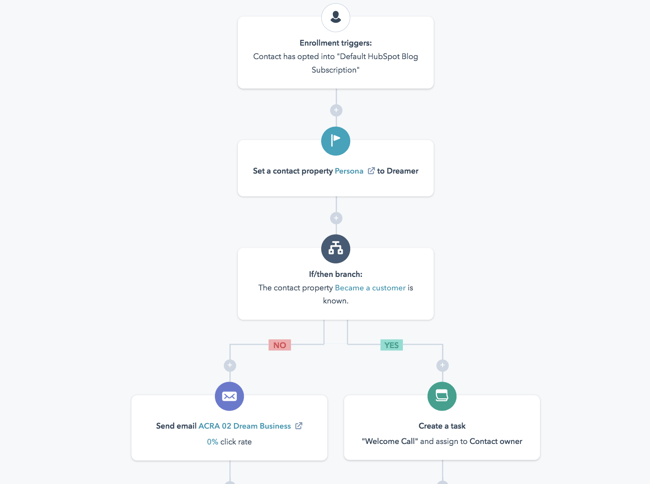
Some of the most repetitive tasks in marketing, such as sending emails and posting social media updates, can be automated with workflow automation. With marketing automation software, you can schedule your entire social media calendar and set up workflows that nurture certain types of prospects with email offers.
Automated workflows in marketing include:
- Subscribing a user to a drip campaign when they download a resource from your website
- Welcoming a user to your company after they purchase a product
- Reminding a user to check out after they’ve added various items to their cart
- Scheduling social media posts across multiple platforms
- Distributing marketing tasks across team members
Additional Reading
- Beginner’s Guide to Marketing Automation
- Marketing Automation Benefits
- B2C Marketing Automation
- Email Marketing Workflows
Sales Workflow Automation
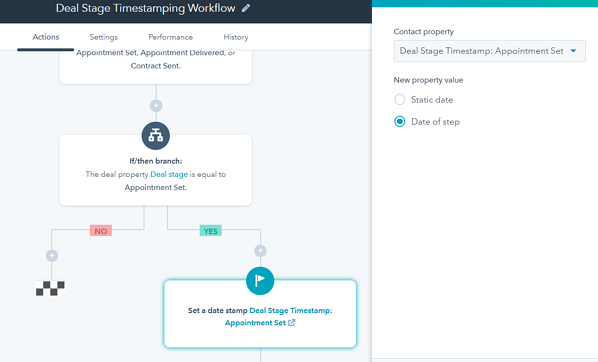
Sales workflow automation streamlines tedious lead and prospect management tasks, so that reps can focus on selling, not entering data. Aside from taking leads automatically through the pipeline based on their actions, an automated sales workflow can enroll prospects in drip campaigns and update deal stages as the deal moves forward.
Automated tasks in sales include:
- Placing each lead at a different stage of the pipeline when they take a certain action
- Moving a lead out of the pipeline if they’ve stopped responding to emails
- Sending an introduction email from a sales rep to a lead after they download an ebook
- Updating the deal stage once the lead has scheduled an appointment or meeting
- Creating tasks for sales reps once a lead has scheduled a meeting
Additional Reading
Customer Service Workflow Automation
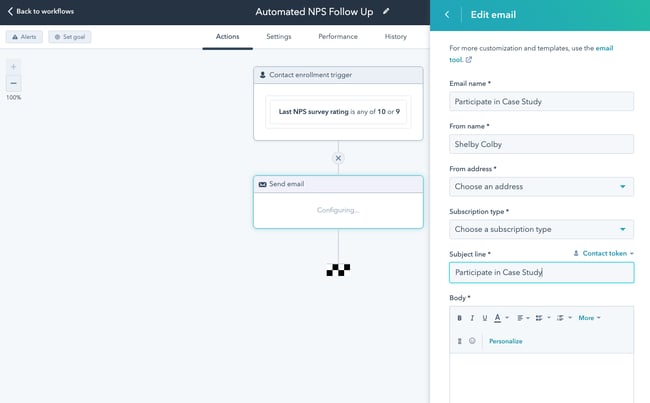
Workflow automation is incredibly useful in customer service. Aside from launching surveys, workflow automation can take care of tickets, cases, and common questions by sending a series of emails or creating tasks.
Automated tasks in customer service include:
- Creating a new ticket in the system when someone reaches out through social media or email
- Onboarding customers with a series of helpful emails
- Sending NPS® surveys and enrolling them into different email campaigns depending on their rating
- Assigning tickets a priority label depending on the tone of the message or email
- Resolving and archiving tickets once a resolution has been reached
Additional Reading
- Beginner’s Guide to Customer Service Automation
- Customer Relationship Automation
- Customer Service Software Tools
- AI Chatbots Tools
Operations Workflow Automation
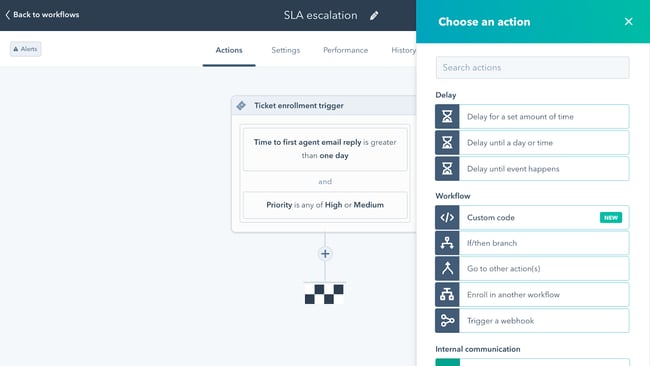
Operations is the lifeblood of any organization, and it, too, can be automated to reduce instances of manual data entry.
Automated tasks in operations include:
- Deleting duplicates once they have been detected or merging two properties if they’re the same
- Managing team permissions for new team members
- Establishing priorities for different businesses processes
- Automatically compiling reports at the end of every quarter
- Creating tasks in third-party tools such as Asana, Slack, or Zoom
Additional Reading
Human Resources Workflow Automation
Instead of having to manually enter all your new hires’ personal information — like addresses, social security numbers, and other employee information into payroll, expense, and insurance systems — HR automation software can do it for you in minutes.
Automated tasks in human resources include:
- Removing candidates from the database if they’ve been inactive for a period of time
- Sending emails to candidates that haven’t made it to the final round
- Filtering candidates with certain keywords in their job history
- Sending W2s to current employees
- Collecting employees’ feedback after they’ve been at the company for a period of time
Finance Workflow Automation
By allowing you to build forms, design workflows, and track processes, finance process automation software can streamline all of your travel requests, reimbursements, and budget approvals.
Automated tasks in finance include:
- Taking an expense approval process from start to finish
- Managing vendor and contract approvals
- Assigning priorities to ACH and wire requests
- Managing travel expense requests depending on location and activity
- Approving budgets based on a predetermined set of parameters
Now that you know everything about using automated workflows, let’s take a look at the top tools you can use.
Best Workflow Automation Software in 2022
1. HubSpot: Best All-in-One Workflow Automation Software
HubSpot’s marketing, sales, service, and operations software operates on a single platform, making it one of the best choices for all-in-one workflow automation. Everything is linked together, allowing you to align all of your teams’ processes and reducing friction from task to task.
You can easily hand leads from marketing to sales, connect a service ticket with an existing contact record, and clean up customer data — all in one user-friendly platform.
Best for: HubSpot is highly recommended for growing businesses that have yet to try workflow automation and for enterprise businesses with established processes. You can begin with a Starter subscription, then upgrade as you require more functionalities. Especially recommended for marketing, sales, service, and operations departments.
Pricing for Marketing Hub: Free; $50/month (Starter); $890/month (Professional); $3,200/month (Enterprise)
Pricing for Sales Hub: Free; $50/month (Starter); $500/month (Professional); $1,200/month (Enterprise)
Pricing for Service Hub: Free; $50/month (Starter); $400/month (Professional); $1,200/month (Enterprise)
Pricing for Operations Hub: Free; $50/month (Starter); $800/month (Professional)
2. Nintex: Best Enterprise Workflow Automation Software
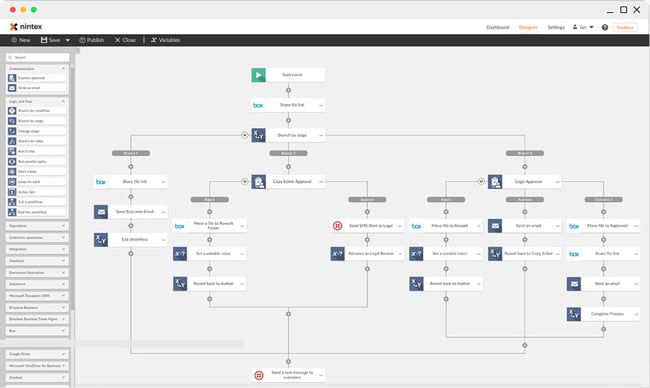 With over 3 million workflow applications operating on their platform right now, Nintex helps more than 8,000 enterprise customers manage, automate, and optimize their business processes, with no coding experience required.
With over 3 million workflow applications operating on their platform right now, Nintex helps more than 8,000 enterprise customers manage, automate, and optimize their business processes, with no coding experience required.
By offering a multitude of workflow automation tools — like process mapping, advanced workflows, and process intelligence — your business is able to map out each of your processes, execute them, and monitor their performance.
Best for: Nintex is highly recommended for enterprise businesses with established processes. It’s a robust software that pairs a user-friendly workflow design tool with powerful integrations that will connect every single one of your apps. Especially recommended for IT, law, HR, and finance departments.
Pricing: $910/month (Standard); $1,400/month (Enterprise)
3. Kissflow: Best Beginner-Friendly Workflow Automation Software
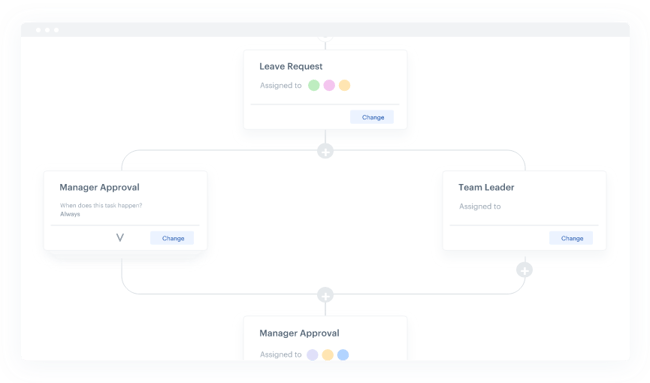
Trusted by over 10,000 companies, including Domino’s, Michelin, and Pepsi, Kissflow offers an all-in-one workflow automation software that lets your business create workflows that automate tasks in your human resources, sales, finance, administration, marketing, and purchase departments.
With over 50 pre-installed business process management apps — such as expensing and sales orders, conditions and triggers, and reporting dashboards for your workflows — Kissflow can streamline almost all your business processes.
Best for: Kissflow is highly recommended for small companies that are just now starting to try workflow automation. The tool’s simplicity and user friendliness will make it easier to begin automating processes. Especially recommended for procurement, HR, and finance departments.
Pricing: $200/month (Basic); $495/month (Advanced); $1,900/month (Fully Loaded)
4. Integrify: Best Everyday Administration Workflow Automation Software
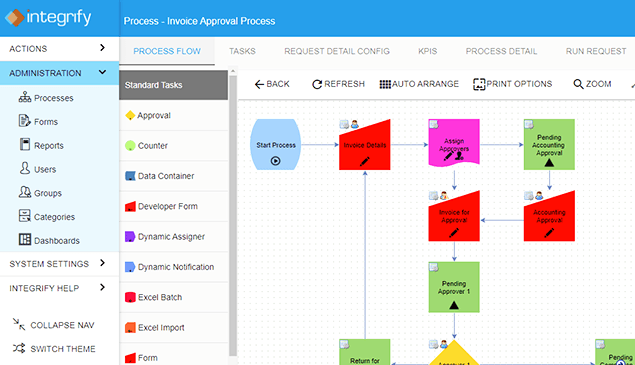
Integrify is a workflow automation software that lets you build workflows in a drag-and-drop builder and run parallel or sequential flows. By being able to collaborate on tasks and requests, test your processes, and set up reminders, you can easily streamline your business processes and automate manual tasks.
Integrify also offers workflow examples and a user knowledge base, a rest-based open API that allows you to integrate with external databases, and the ability to import and export data from Excel and even PDFs.
Best for: Integrify is highly recommended for small-to-medium businesses that are looking to automate everyday tasks. Its drag-and-drop “Process Builder” makes it simple and easy to take a process from start to completion. Especially recommended for administration departments.
Pricing: Pricing available upon request
5. Zapier: Best Workflow Automation Software for Connecting Apps

With the ability to connect to and share data with over 1,000 web apps, like Facebook, QuickBooks, and Google Drive, Zapier can automate almost any type of business process. All you have to do is build a workflow in their editor, pick the apps you want to include in your workflow, and design it.
For example, if you want to be able to save all your attachments in Dropbox, you can design a workflow that automatically copies any attachment from your Gmail inbox to Dropbox and then sends you a Slack message about the download.
Best for: Zapier is highly recommended for freelancers and small-to-medium businesses that use a wide variety of tools that aren’t talking with each other. For instance, if you’re using MailChimp to send emails and Typeform to collect leads, you could connect those two tools using Zapier. Especially recommended for marketing and service departments.
Pricing: Free; $19.99/month (Starter); $49/month (Professional)
6. Flokzu: Best Project Management Workflow Automation Software
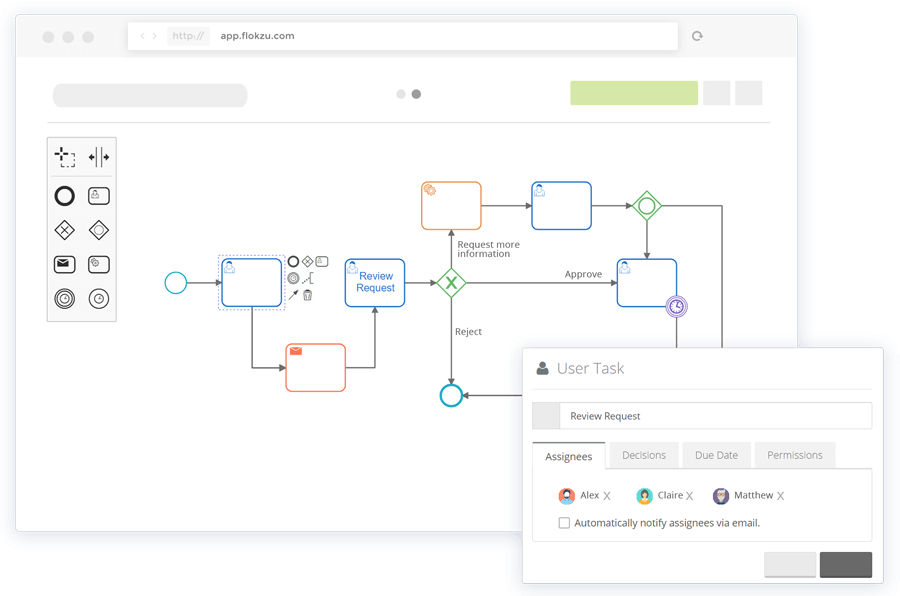
Without writing any code, Flokzu allows you to create tasks, deadlines, business rules, and notifications. Their software also sends pending tasks to each of your project’s assignees’ inboxes, and as each stage of a workflow is complete, it’ll automatically assign each new task to a user or role.
Additionally, Flozku offers a reporting dashboard that displays your business processes’
performance and metrics, like the amount of currently delayed tasks there are, tasks assigned to each user and role, tasks completed, and the time each task took, which will give you the necessary data to refine and optimize your future workflows.
Best for: Flokzu is highly recommended for individual teams that want to optimize their time management and task workflow. A key feature of this tool is that users will receive pending tasks in their inbox, making it an excellent project management tool. Recommended for any team.
Pricing: Free; $19.99/month (Starter); $49/month (Professional)
Workflow Automation Will Help You Grow Better
Workflow automation is critical for businesses that want to scale and grow without letting anything fall through the cracks. By letting technology complete manual tasks, you can effectively grow your business without any growing pains.
Editor's note: This post was originally published in January 2019 and has been updated for comprehensiveness.
from Marketing https://blog.hubspot.com/marketing/workflow-automation
Manual data entry might be one of the most tedious and inefficient tasks in the corporate world. Not only does it put you to sleep, but it also wastes precious time and resources, slashing your productivity to bits.
According to Zapier, 94% of workers perform time-consuming, repetitive tasks. Fortunately, there’s technology that can automate these mind-numbing tasks, eliminating human error and letting you focus on the work that actually matters — workflow automation.
By leveraging self-operating processes that run manual tasks, workflow automation can help your business save time and money, diminish errors, and boost productivity.
Table of Contents
How does workflow automation work?
Workflow automation typically relies on a series of if/then statements to trigger another task. It then branches off depending on the action that was taken by a lead, employee, or another stakeholder.
Let’s walk through an example workflow for turning a form submission into a deal opportunity.
- A website visitor submits a form.
- The action automatically enrolls the visitor in a drip campaign. It creates a new deal and sets the status to "New."
- The first email of the drip campaign is sent to the lead, requesting to schedule a meeting.
- The lead clicks through to the meeting scheduler and creates an appointment.
- A thank you email is sent to the lead, confirming the date and time.
- The CRM creates a new task and assigns it to a sales rep.
- The sales rep then reaches out personally, ending the automated workflow.
Here’s what a workflow can look like from start to finish.
Almost every department in your business can benefit from workflow automation. Whether it’s marketing, human resources, or finance, the technology can help you work smarter, not harder.
Below, we’ll cover some of the most popular workflow automation examples.
Workflow automation can be used in virtually any team and in any business scenario. While it’s mostly related to marketing and sales, it can also be used in customer service, operations, human resources, and finance.
Marketing Workflow Automation

Some of the most repetitive tasks in marketing, such as sending emails and posting social media updates, can be automated with workflow automation. With marketing automation software, you can schedule your entire social media calendar and set up workflows that nurture certain types of prospects with email offers.
Automated workflows in marketing include:
- Subscribing a user to a drip campaign when they download a resource from your website
- Welcoming a user to your company after they purchase a product
- Reminding a user to check out after they’ve added various items to their cart
- Scheduling social media posts across multiple platforms
- Distributing marketing tasks across team members
Additional Reading
- Beginner’s Guide to Marketing Automation
- Marketing Automation Benefits
- B2C Marketing Automation
- Email Marketing Workflows
Sales Workflow Automation

Sales workflow automation streamlines tedious lead and prospect management tasks, so that reps can focus on selling, not entering data. Aside from taking leads automatically through the pipeline based on their actions, an automated sales workflow can enroll prospects in drip campaigns and update deal stages as the deal moves forward.
Automated tasks in sales include:
- Placing each lead at a different stage of the pipeline when they take a certain action
- Moving a lead out of the pipeline if they’ve stopped responding to emails
- Sending an introduction email from a sales rep to a lead after they download an ebook
- Updating the deal stage once the lead has scheduled an appointment or meeting
- Creating tasks for sales reps once a lead has scheduled a meeting
Additional Reading
Customer Service Workflow Automation

Workflow automation is incredibly useful in customer service. Aside from launching surveys, workflow automation can take care of tickets, cases, and common questions by sending a series of emails or creating tasks.
Automated tasks in customer service include:
- Creating a new ticket in the system when someone reaches out through social media or email
- Onboarding customers with a series of helpful emails
- Sending NPS® surveys and enrolling them into different email campaigns depending on their rating
- Assigning tickets a priority label depending on the tone of the message or email
- Resolving and archiving tickets once a resolution has been reached
Additional Reading
- Beginner’s Guide to Customer Service Automation
- Customer Relationship Automation
- Customer Service Software Tools
- AI Chatbots Tools
Operations Workflow Automation

Operations is the lifeblood of any organization, and it, too, can be automated to reduce instances of manual data entry.
Automated tasks in operations include:
- Deleting duplicates once they have been detected or merging two properties if they’re the same
- Managing team permissions for new team members
- Establishing priorities for different businesses processes
- Automatically compiling reports at the end of every quarter
- Creating tasks in third-party tools such as Asana, Slack, or Zoom
Additional Reading
Human Resources Workflow Automation
Instead of having to manually enter all your new hires’ personal information — like addresses, social security numbers, and other employee information into payroll, expense, and insurance systems — HR automation software can do it for you in minutes.
Automated tasks in human resources include:
- Removing candidates from the database if they’ve been inactive for a period of time
- Sending emails to candidates that haven’t made it to the final round
- Filtering candidates with certain keywords in their job history
- Sending W2s to current employees
- Collecting employees’ feedback after they’ve been at the company for a period of time
Finance Workflow Automation
By allowing you to build forms, design workflows, and track processes, finance process automation software can streamline all of your travel requests, reimbursements, and budget approvals.
Automated tasks in finance include:
- Taking an expense approval process from start to finish
- Managing vendor and contract approvals
- Assigning priorities to ACH and wire requests
- Managing travel expense requests depending on location and activity
- Approving budgets based on a predetermined set of parameters
Now that you know everything about using automated workflows, let’s take a look at the top tools you can use.
Best Workflow Automation Software in 2022
1. HubSpot: Best All-in-One Workflow Automation Software
HubSpot’s marketing, sales, service, and operations software operates on a single platform, making it one of the best choices for all-in-one workflow automation. Everything is linked together, allowing you to align all of your teams’ processes and reducing friction from task to task.
You can easily hand leads from marketing to sales, connect a service ticket with an existing contact record, and clean up customer data — all in one user-friendly platform.
Best for: HubSpot is highly recommended for growing businesses that have yet to try workflow automation and for enterprise businesses with established processes. You can begin with a Starter subscription, then upgrade as you require more functionalities. Especially recommended for marketing, sales, service, and operations departments.
Pricing for Marketing Hub: Free; $50/month (Starter); $890/month (Professional); $3,200/month (Enterprise)
Pricing for Sales Hub: Free; $50/month (Starter); $500/month (Professional); $1,200/month (Enterprise)
Pricing for Service Hub: Free; $50/month (Starter); $400/month (Professional); $1,200/month (Enterprise)
Pricing for Operations Hub: Free; $50/month (Starter); $800/month (Professional)
2. Nintex: Best Enterprise Workflow Automation Software
 With over 3 million workflow applications operating on their platform right now, Nintex helps more than 8,000 enterprise customers manage, automate, and optimize their business processes, with no coding experience required.
With over 3 million workflow applications operating on their platform right now, Nintex helps more than 8,000 enterprise customers manage, automate, and optimize their business processes, with no coding experience required.
By offering a multitude of workflow automation tools — like process mapping, advanced workflows, and process intelligence — your business is able to map out each of your processes, execute them, and monitor their performance.
Best for: Nintex is highly recommended for enterprise businesses with established processes. It’s a robust software that pairs a user-friendly workflow design tool with powerful integrations that will connect every single one of your apps. Especially recommended for IT, law, HR, and finance departments.
Pricing: $910/month (Standard); $1,400/month (Enterprise)
3. Kissflow: Best Beginner-Friendly Workflow Automation Software

Trusted by over 10,000 companies, including Domino’s, Michelin, and Pepsi, Kissflow offers an all-in-one workflow automation software that lets your business create workflows that automate tasks in your human resources, sales, finance, administration, marketing, and purchase departments.
With over 50 pre-installed business process management apps — such as expensing and sales orders, conditions and triggers, and reporting dashboards for your workflows — Kissflow can streamline almost all your business processes.
Best for: Kissflow is highly recommended for small companies that are just now starting to try workflow automation. The tool’s simplicity and user friendliness will make it easier to begin automating processes. Especially recommended for procurement, HR, and finance departments.
Pricing: $200/month (Basic); $495/month (Advanced); $1,900/month (Fully Loaded)
4. Integrify: Best Everyday Administration Workflow Automation Software

Integrify is a workflow automation software that lets you build workflows in a drag-and-drop builder and run parallel or sequential flows. By being able to collaborate on tasks and requests, test your processes, and set up reminders, you can easily streamline your business processes and automate manual tasks.
Integrify also offers workflow examples and a user knowledge base, a rest-based open API that allows you to integrate with external databases, and the ability to import and export data from Excel and even PDFs.
Best for: Integrify is highly recommended for small-to-medium businesses that are looking to automate everyday tasks. Its drag-and-drop “Process Builder” makes it simple and easy to take a process from start to completion. Especially recommended for administration departments.
Pricing: Pricing available upon request
5. Zapier: Best Workflow Automation Software for Connecting Apps

With the ability to connect to and share data with over 1,000 web apps, like Facebook, QuickBooks, and Google Drive, Zapier can automate almost any type of business process. All you have to do is build a workflow in their editor, pick the apps you want to include in your workflow, and design it.
For example, if you want to be able to save all your attachments in Dropbox, you can design a workflow that automatically copies any attachment from your Gmail inbox to Dropbox and then sends you a Slack message about the download.
Best for: Zapier is highly recommended for freelancers and small-to-medium businesses that use a wide variety of tools that aren’t talking with each other. For instance, if you’re using MailChimp to send emails and Typeform to collect leads, you could connect those two tools using Zapier. Especially recommended for marketing and service departments.
Pricing: Free; $19.99/month (Starter); $49/month (Professional)
6. Flokzu: Best Project Management Workflow Automation Software

Without writing any code, Flokzu allows you to create tasks, deadlines, business rules, and notifications. Their software also sends pending tasks to each of your project’s assignees’ inboxes, and as each stage of a workflow is complete, it’ll automatically assign each new task to a user or role.
Additionally, Flozku offers a reporting dashboard that displays your business processes’
performance and metrics, like the amount of currently delayed tasks there are, tasks assigned to each user and role, tasks completed, and the time each task took, which will give you the necessary data to refine and optimize your future workflows.
Best for: Flokzu is highly recommended for individual teams that want to optimize their time management and task workflow. A key feature of this tool is that users will receive pending tasks in their inbox, making it an excellent project management tool. Recommended for any team.
Pricing: Free; $19.99/month (Starter); $49/month (Professional)
Workflow Automation Will Help You Grow Better
Workflow automation is critical for businesses that want to scale and grow without letting anything fall through the cracks. By letting technology complete manual tasks, you can effectively grow your business without any growing pains.
Editor's note: This post was originally published in January 2019 and has been updated for comprehensiveness.

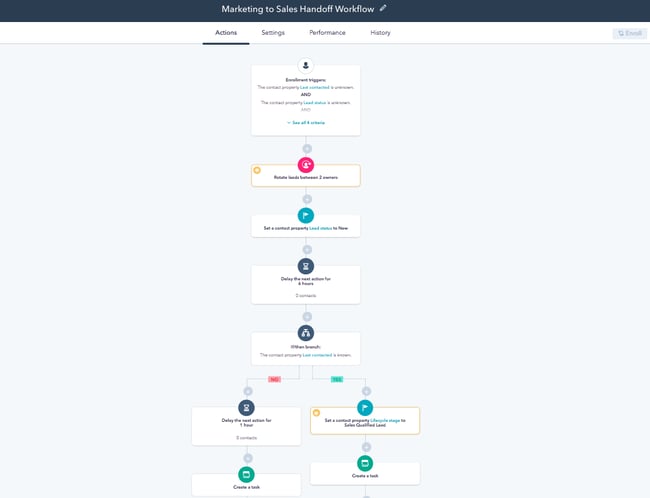 Image Source
Image Source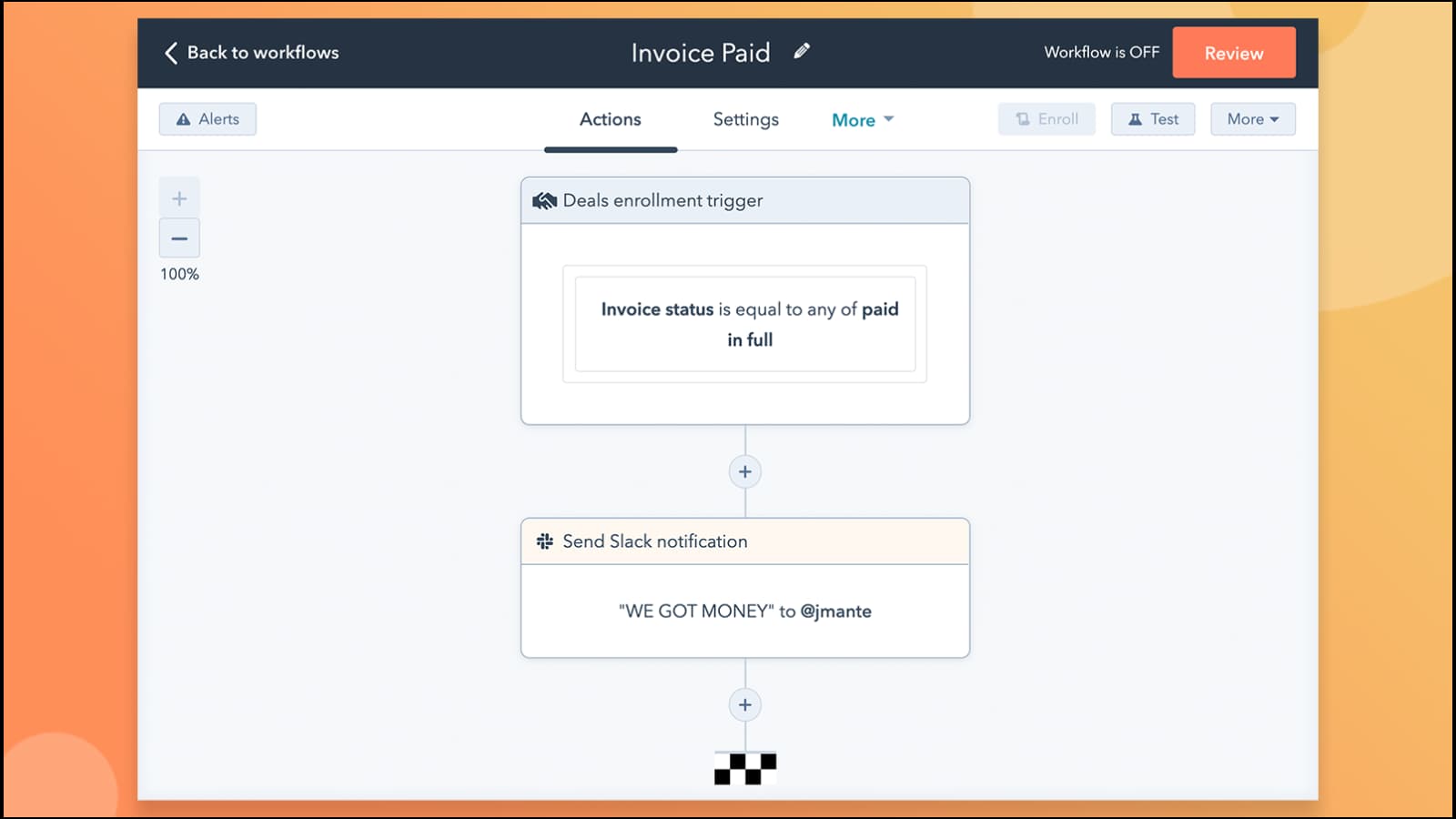
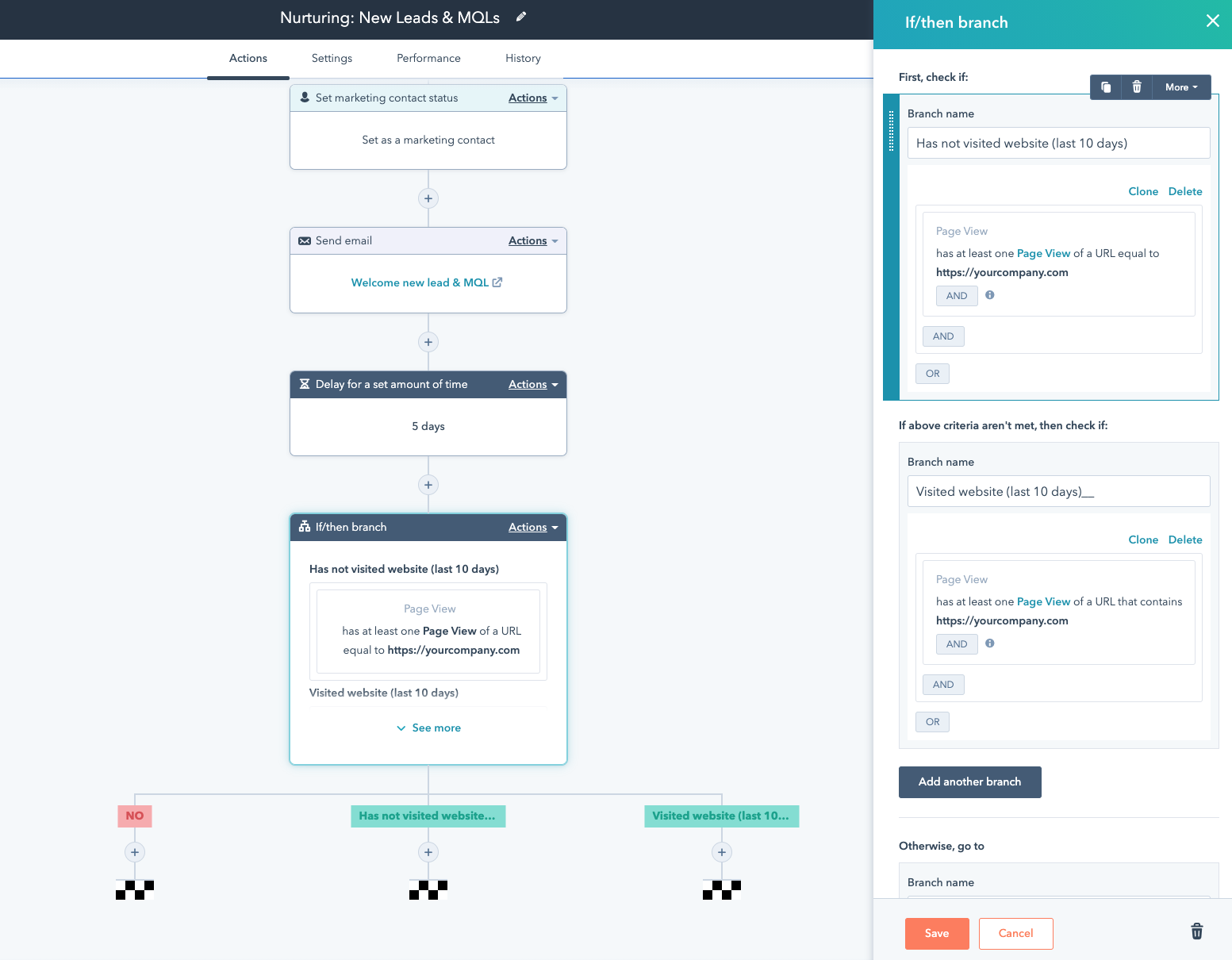

No hay comentarios:
Publicar un comentario